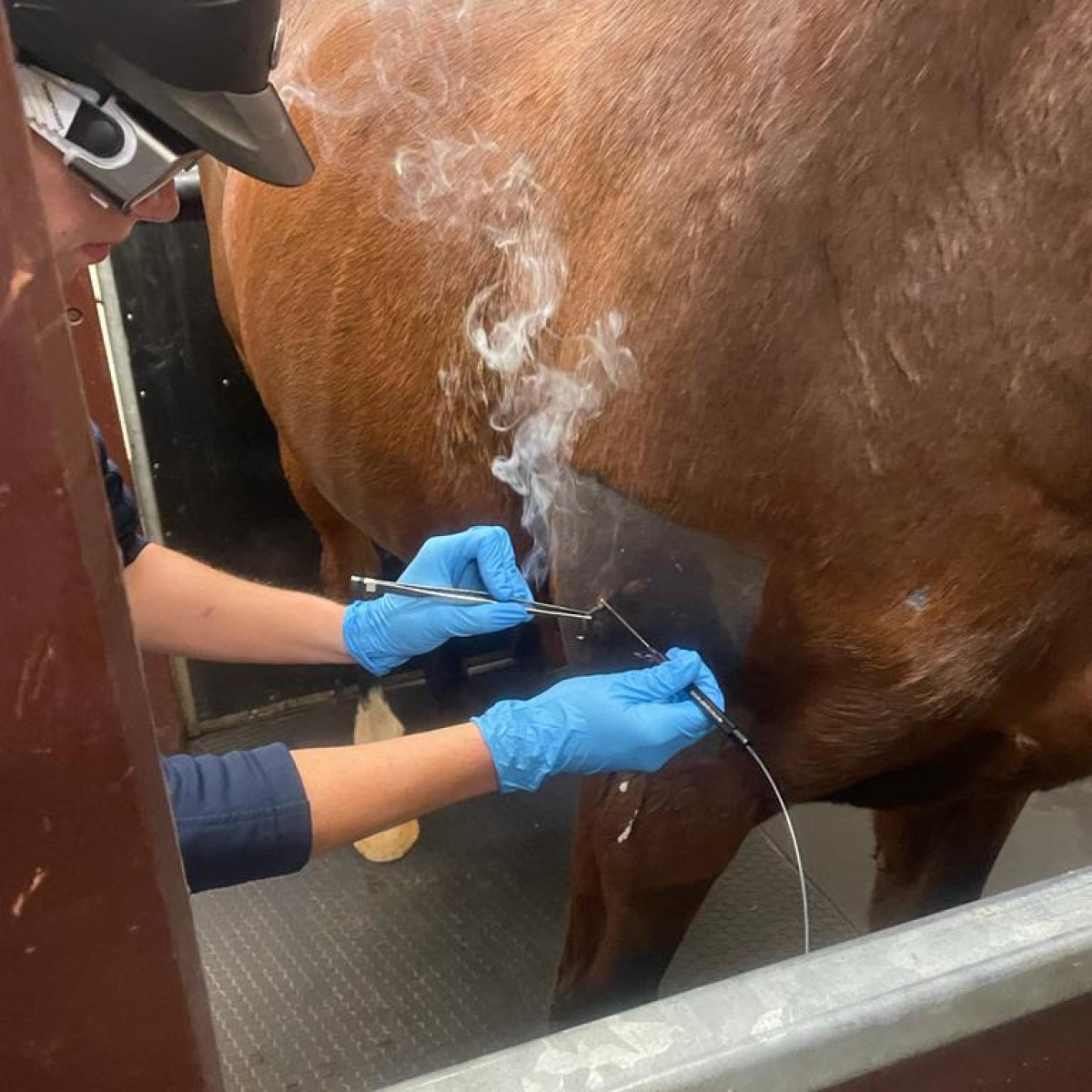Equine Therapy Success Stories: Actual People, Actual Emotional Changes
Wiki Article
Exactly How Laser Therapy in Equine Therapy Is Changing Veterinary Look After Horses
Laser therapy has emerged as a transformative approach in equine veterinary care, offering a non-invasive remedy that expedites recovery and improves overall health. The mobility and adaptability of laser therapy tools better highlight their growing indispensability among vets.Comprehending Laser Treatment

The modern technology behind laser therapy is grounded in the principle of photochemistry, where photons are soaked up by chromophores within cells, leading to increased ATP production and inflection of responsive oxygen types (Equine Therapy). This, in turn, advertises mobile expansion, lowers swelling, and speeds up recovery. Veterinary professionals use various types of lasers, consisting of low-level lasers (LLLT) and high-power Class IV lasers, relying on the certain restorative objectives and the nature of the equine condition being treated
Various laser wavelengths and power settings are very carefully chosen to target different cells depths and attain wanted scientific results. Safety methods are critical, as inappropriate use can bring about thermal damages or suboptimal restorative impacts. Thus, a comprehensive understanding of laser therapy's mechanisms and applications is important for its effective application in equine veterinary practice.
Benefits for Equine Wellness
The myriad benefits of laser therapy for equine health incorporate improved healing, pain reduction, and improved flexibility. This sophisticated treatment method leverages particular wavelengths of light to pass through tissues, boosting mobile feature and promoting rapid tissue fixing. The non-invasive nature of laser therapy ensures minimal tension and discomfort for the horse, helping with a smoother healing procedure.
Boosted healing is one of the foremost benefits, as laser treatment speeds up cellular regrowth and collagen synthesis. Pain decrease is attained through the anti-inflammatory effects of laser treatment, which reduces swelling and decreases the production of pain-inducing chemicals.
By minimizing inflammation and pain, and boosting tissue repair, laser therapy aids in recovering joint feature and muscle adaptability. Therefore, laser therapy stands as a transformative tool in modern equine veterinary treatment.
Common Problems Dealt With
Laser treatment has arised as a versatile treatment option for a selection of typical equine conditions. In addition, laser treatment is effective for conditions like osteoarthritis, where it helps alleviate joint swelling and promote cells repair.Wound administration is an additional location where laser treatment has actually revealed significant guarantee. Persistent wounds or slow-healing ulcers can be specifically difficult in horses, yet laser treatment enhances cellular regeneration and enhances blood circulation, thus accelerating the recovery process. Additionally, laser therapies have actually been successfully used in taking care of unguis conditions such as laminitis and abscesses, minimizing discomfort and promoting quicker healing.

Modern Technology Behind Laser Therapy
Beyond the myriad conditions treatable with laser treatment, the technology itself advantages closer examination. At the heart of laser treatment is using details wavelengths of light to penetrate tissues and elicit biological reactions. These wavelengths, commonly varying from 600 to 1000 nanometers, are uniquely soaked up by chromophores in the skin, muscle mass, and various other tissues, initiating a waterfall of mobile events.Laser devices made use of in veterinary medicine often utilize low-level laser treatment (LLLT) or chilly laser therapy. Unlike high-powered surgical lasers, these gadgets run at lower energy levels, optimizing restorative benefits while reducing thermal damages. The energy from the laser light promotes adenosine triphosphate (ATP) production, boosts mobile metabolic process, and speeds up tissue fixing procedures.

Success Stories and Study

Showcasing the tangible advantages of laser therapy, countless success tales and study illuminate its transformative effect on equine wellness. One more helpful hints such case includes a purebred racehorse struggling with chronic tendonitis. Conventional therapies yielded marginal enhancement, yet after incorporating laser therapy right into the routine, pop over to these guys the horse displayed substantial reductions in inflammation and pain within weeks, inevitably going back to affordable racing.
Another engaging instance includes a dressage steed diagnosed with extreme neck and back pain, restricting its performance. A vet team utilized low-level laser therapy (LLLT) to target the swollen areas, leading to significant renovation in versatility and a notable decrease in discomfort. Over numerous sessions, the horse regained its peak type, showcasing the effectiveness of laser treatment in addressing musculoskeletal concerns.
Additionally, a research carried out at a leading equine center analyzed 50 equines with numerous soft cells injuries treated with laser therapy. The outcomes were striking: 85% of the steeds demonstrated accelerated recovery times and improved flexibility. These situations highlight the flexibility and efficiency of laser therapy in equine medication, supplying a non-invasive, scientifically-backed technique to boosting recovery and performance in horses.
Conclusion
Laser treatment is reinventing equine vet treatment by providing a non-invasive treatment that increases recovery, minimizes swelling, and reduces discomfort. With its efficiency in dealing with an array of conditions, from musculoskeletal injuries to persistent disorders like osteoarthritis, this innovation significantly boosts equine health and wellness and mobility. The portability and versatility of laser therapy additionally emphasize its transformative effect on veterinary methods, solidifying its duty as an essential device in contemporary equine health care.Report this wiki page